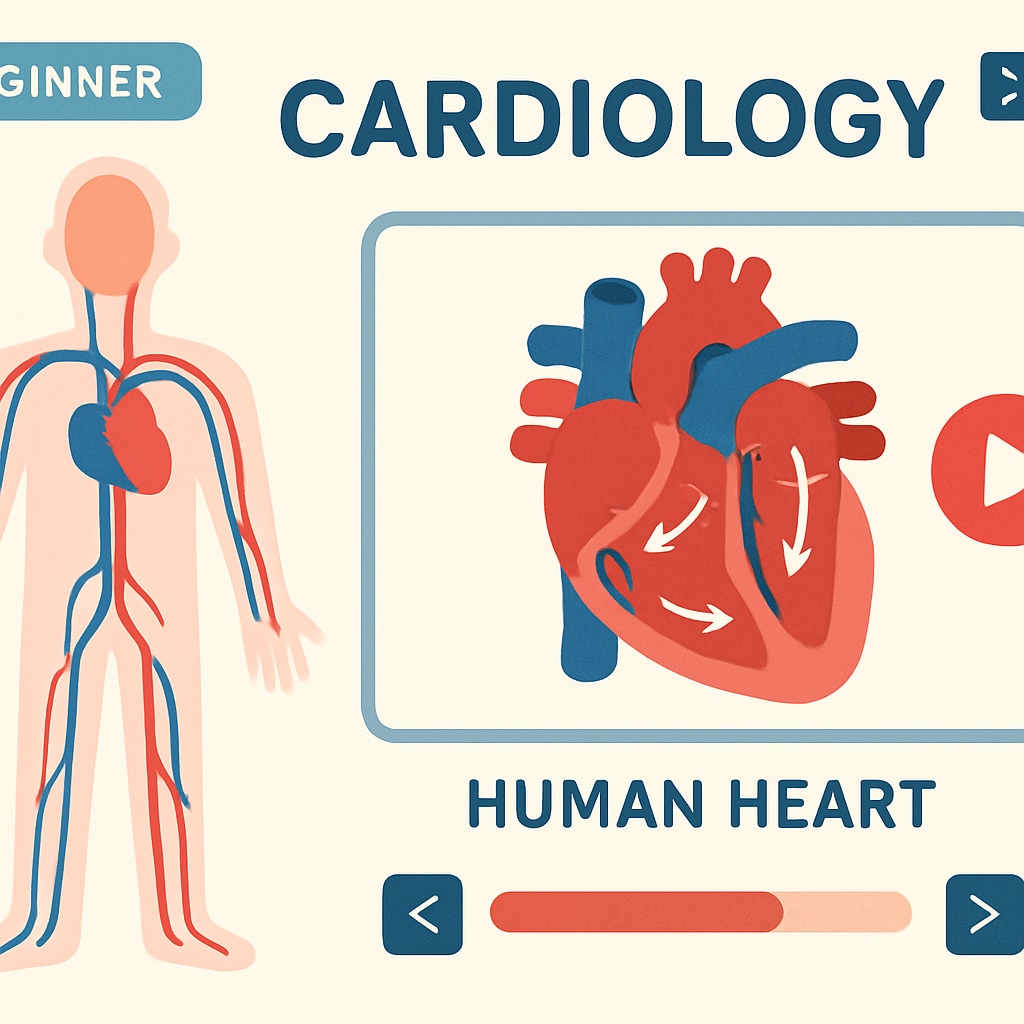For non-medical students interested in pursuing knowledge in heart health and cardiology, resources can often feel overwhelming or inaccessible. The challenge of finding the “right fit” in educational materials is particularly daunting for K12 students who want to explore medicine without prior formal training. This article dives into how non-medical learners can find cardiology resources that are both comprehensible and engaging, including the use of online courses, interactive tools, and beginner-friendly platforms.
Challenges in Accessing Cardiological Knowledge as a Non-Medical Student
One of the most significant barriers non-medical students face is the complexity of medical terminology and concepts. Without foundational knowledge in biology or chemistry, technical terms like “myocardial infarction” (heart attack) or “echocardiogram” (heart imaging test) can seem intimidating. In addition, many medical resources are designed for professionals or advanced students, making it hard for beginners to find suitable materials.
Another challenge is the lack of structured pathways for beginners. Most available resources assume that users already have basic medical knowledge, leaving little room for K12 students or curious learners to grasp introductory concepts. For example, traditional textbooks often present dense content without interactive features, making them unsuitable for younger audiences.

Finding Accessible and Beginner-Friendly Cardiology Resources
To bridge the gap, non-medical students can explore tailored platforms and tools that simplify cardiology concepts. Here are some effective strategies:
- Interactive Online Courses: Platforms like Khan Academy offer beginner-friendly medical courses, breaking down cardiology topics with animations and quizzes.
- Educational Apps: Apps like Complete Anatomy or Heartpedia provide visual aids and interactive simulations for understanding heart functions and diseases.
- Video Tutorials: Websites such as YouTube host channels like Osmosis and CrashCourse, where experts simplify medical concepts for general audiences.
- Beginner Textbooks: Books such as “Human Biology for Beginners” offer a less technical approach to understanding cardiovascular systems.
These resources cater to a wide range of learners, from K12 students to adults looking for foundational cardiology knowledge. In addition, they often include interactive elements, making the learning experience more engaging and less intimidating.

Tips for Choosing the Right Resources
With the abundance of information available online, selecting the right cardiology resources can be overwhelming. To make the process simpler, consider the following tips:
- Identify Your Learning Style: Are you a visual learner, or do you prefer reading text? Choose resources that align with how you best absorb information.
- Start with General Concepts: Begin with basic anatomy and heart functions before delving into specific diseases like arrhythmias or coronary artery disease.
- Seek Age-Appropriate Materials: Ensure the content is designed for your educational level. Resources for K12 students should avoid overly technical language.
- Use Verified Platforms: Stick to reputable sources like Khan Academy or Britannica to ensure accuracy.
By following these tips, non-medical students can gradually build their knowledge and gain confidence in understanding cardiology topics.
The Importance of Accessible Medical Education
Accessible cardiology education is not just beneficial for aspiring medical professionals; it also plays a vital role in fostering a general understanding of heart health. Educating young students about the importance of cardiovascular care can inspire positive lifestyle choices and even spark interest in pursuing careers in healthcare. As a result, initiatives for beginner-friendly medical resources contribute to both individual and societal well-being.
Additionally, with the rise of digital learning tools and online courses, the barriers to accessing medical knowledge are lower than ever. These platforms empower learners from diverse backgrounds to explore cardiology and other medical fields without formal training.
In conclusion, non-medical students, especially those at the K12 level, now have access to a wealth of cardiology resources that are tailored to their needs. By leveraging interactive tools, beginner-friendly courses, and verified educational platforms, aspiring learners can confidently dive into the world of heart health and medicine.
Recommended Reading:


